- Home
- slideshows
- miscellaneous
- What it's really like to climb Everest, according to 10 people who've done it
What it's really like to climb Everest, according to 10 people who've done it
Ronald Crystal, a 77-year-old doctor from New York, said that to get ready for Everest, he did three personal training sessions per week and regularly climbed the 34 floors up to his Manhattan apartment wearing his pack and mountaineering boots.

Most climbers and their Sherpa guides stock up on supplies in Kathmandu, the capital of Nepal, before the climb. From there, they take a 25-min puddle-jumper plane to Lukla airport.
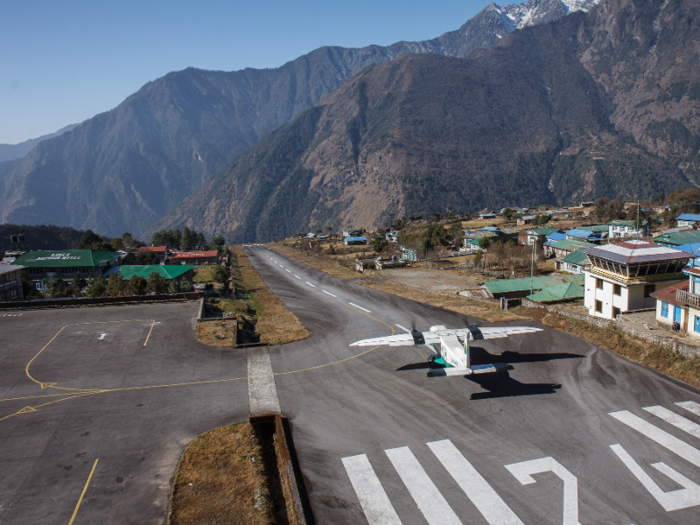
Lukla has a reputation among climbers for being the world's scariest airport; the planes that transport climbers are quite small.
"Imagine a metal tube of human sardines flying through the air," Mark Horrell, Everest climber and the author of the book "Seven Steps from Snowdon to Everest," wrote in his blog. "Sixteen people are crammed tightly together inside with their thighs pressed up against their chests and modestly full day packs balanced on top of their knees."
Horrell, who has made the trip to Lukla seven times, described one accident in 2008 when a pilot misjudged the landing.
"The plane burst into flames, killing everyone on board except the pilot, who was the only one able to escape from the fireball," he wrote.
From Lukla, climbers trek 40 miles to the foot of the mountain. This often takes two weeks, since climbers need to acclimatize to the high-altitude environment.
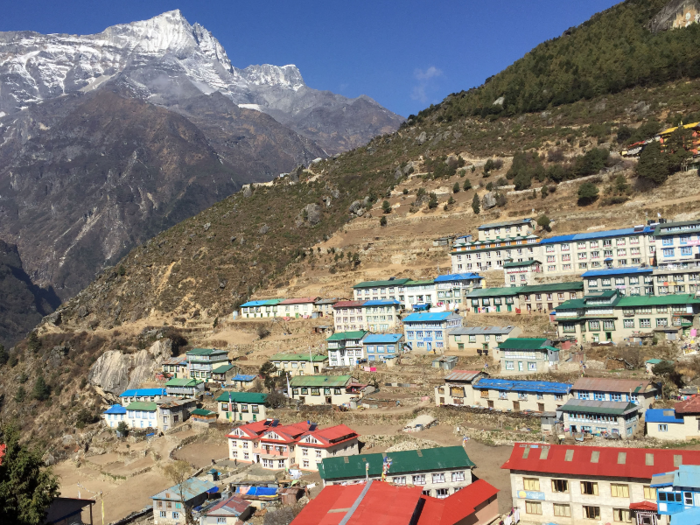
People often pass through Namche Bazaar, a mountain village, to stock up on supplies. According to the AP's Molly Sprayregen, Namche Bazaar even had a North Face store.
Base Camp rests on a large glacier, and even staying there can be treacherous. "According to my trekking guide, the glacial terrain changes so rapidly that the expeditioners have to move their tents every two weeks," Sprayregen wrote.
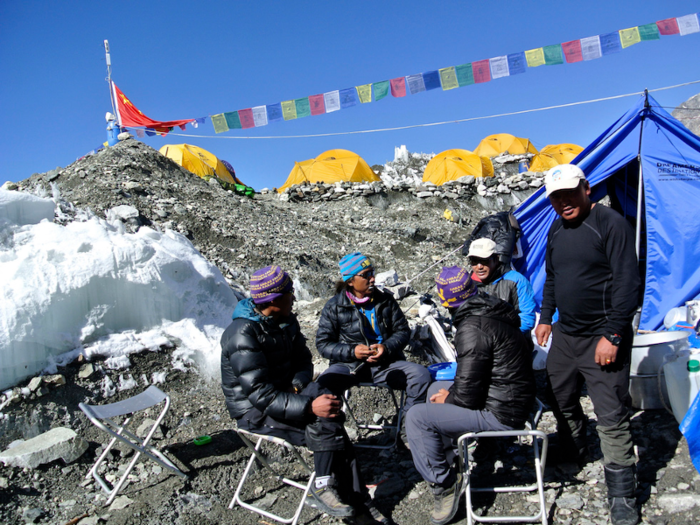
When Sprayregen arrived at Base Camp, she said, "I high-fived my group and took in the sight of dozens of yellow tents pitched across the ice, tents belonging to those preparing for their ascent."
Most of the regulars at Base Camp are sherpas who make their living guiding climbers up the mountain and transporting goods between Kathmandu, Base Camp, and other higher camps on the peak. Sherpas can make about $5,000 a season. Often, they receive a bonus for helping clients reach the top. Some expedition companies charge customers around $65,000 for a chance to climb, which covers the cost of Sherpa guides and food and lodging at Base Camp.
Kami Rita Sherpa holds the world record for Everest summits: 24.
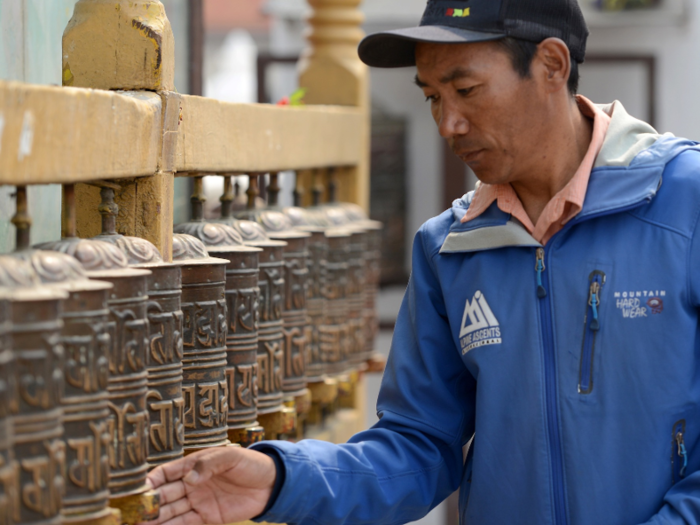
Sherpa previously told Business Insider that climbing Everest is "a little bit" scary, even for him.
"I'm going back next year," Sherpa said.
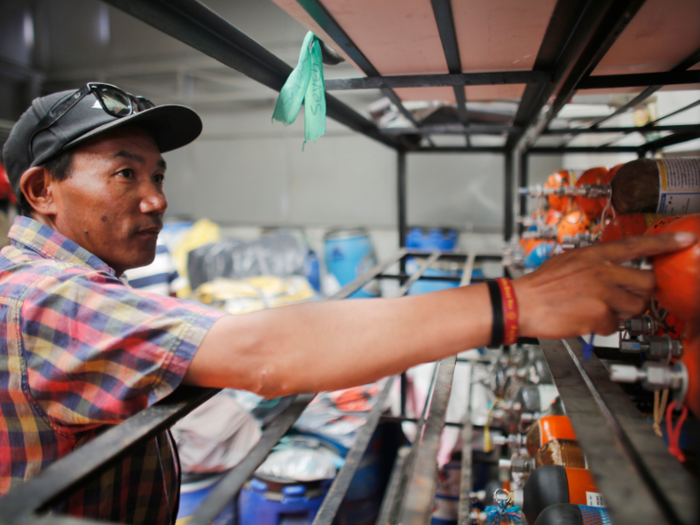
He added that another trip up would allow him to complete his 25th summit during his 50th year of life.
Base Camp sits at an elevation of 17,600 feet, which is high enough to cause health complications. On his second day there, Crystal developed a dangerous lung problem and used his medical expertise to save his own life.
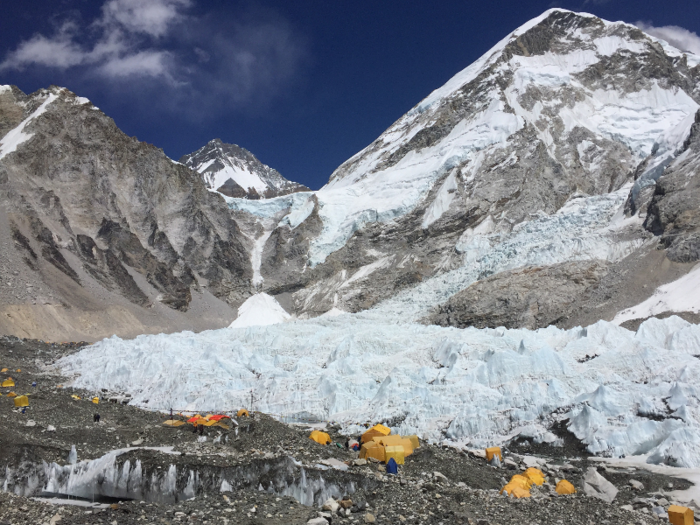
"I'm a pulmonary physician, so I had an instrument with me called an oxygen saturation meter," Crystal said. "It's a little instrument you put on your finger and you can measure the amount of oxygen in your blood."
Crystal realized that he was developing high-altitude pulmonary edema (HAPE), in which dangerous levels of fluid build-up in the lungs. He decided to leave the mountain.
"The best treatment is to get down," he said.
Mountaineers typically spend one to two months at Base Camp, making multiple trips up and down the mountain to acclimatize.
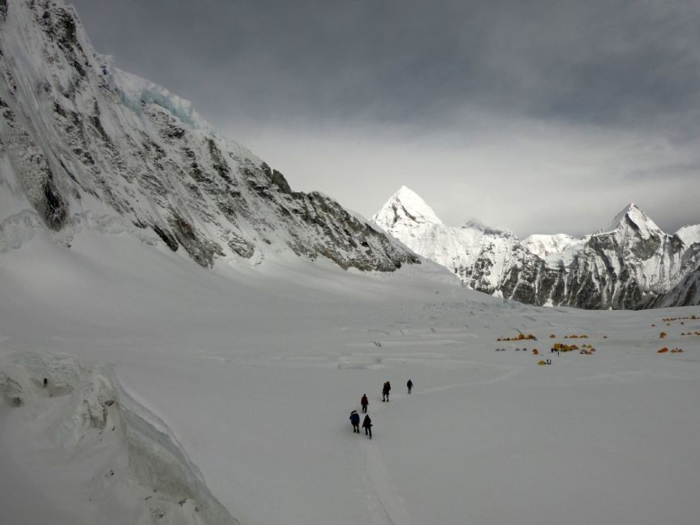
If climbers don't give their bodies enough time to adjust to the lung-crushing conditions in the Himalayas, they could experience swelling in their brain and lungs.
"Everest is a climb to be savored and enjoyed, not rushed," climber Alan Arnette, who summited in 2011, wrote on his blog.
For this reason, expeditions generally make at least three trips up the mountain from Base Camp, going a few thousand feet higher each time before making a push for the top.
During each expedition from Base Camp, climbers must navigate the dangerous Khumbu Icefall. Kami Rita Sherpa said he gets especially nervous during this part of the climb.
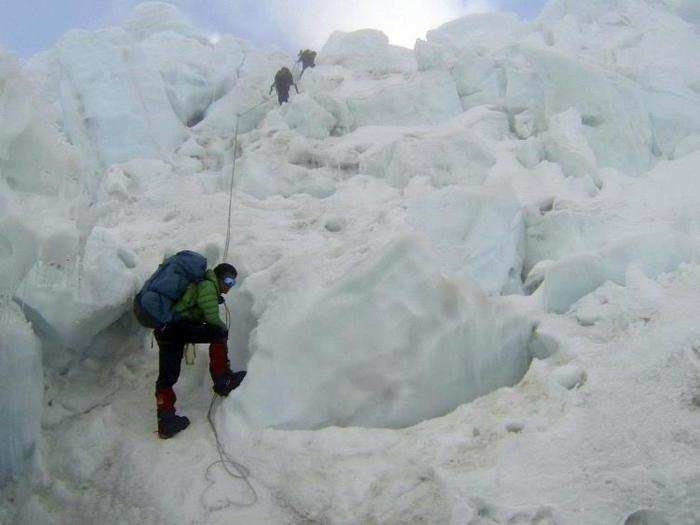
The Khumbu Icefall consists of layers of gigantic ice blocks that are constantly shifting, creating giant crevasses in between them. Climbers use metal ladders to span these cracks.
Between 1953 and 2016, there were 44 deaths at the Icefall — roughly 25% of the total deaths on the south side of Everest during that time. Climbers perished after they fell into crevasses, sections of the Icefall melted and collapsed around them, or avalanches smothered them.
In 2005, climber Shaunna Burke and her partner at the time, Ben Webster, were climbing near the Khumbu Icefall when Webster fell and broke his leg. "I heard him scream my name at top of his lungs," Burke said. "I stopped dead in my tracks. I knew by sound of his voice that something bad had happened."
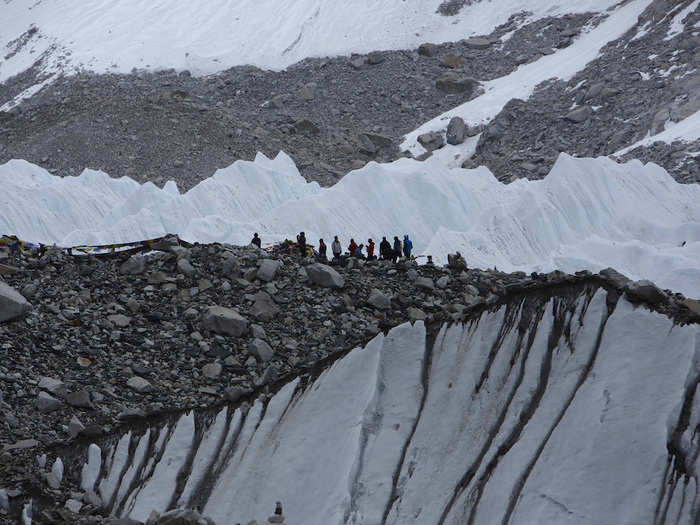
"The weather had been very warm that year," Burke added. "The Khumbu Icefall was unstable and seracs were collapsing."
Webster had stepped on an errant piece of ice that sent him flying sideways. He nearly fell into a deadly crevasse, but stopped himself by wedging his elbows sideways. The fall snapped his tibia and fibula.
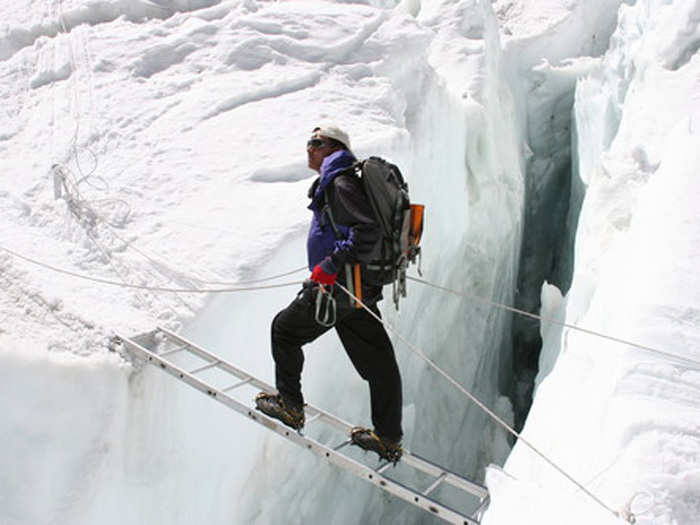
"His leg was at a 90-degree angle," Burke said.
A mountain rescue team was able to evacuate Webster to Base Camp, then to Kathmandu for treatment. Burke kept climbing — the next step after Base Camp is Camp One, at 19,500 feet — and she eventually reached the summit.
Burke said sleeping at the higher camps is almost impossible. "Every second or third breath your body gasps for air, and you wake yourself up," she said.
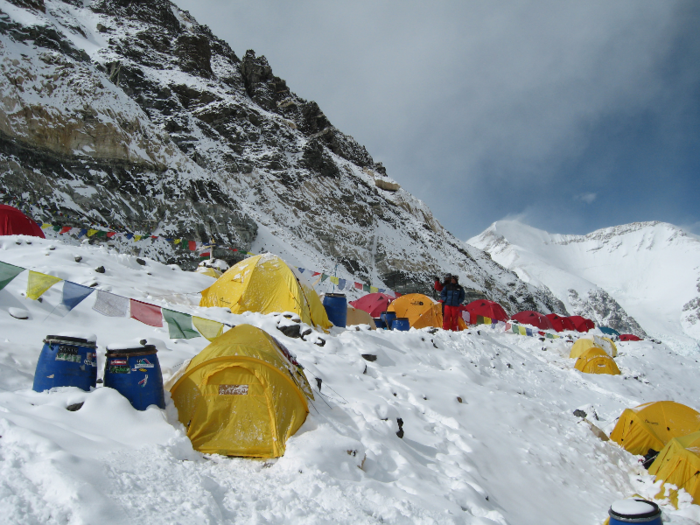
According to mountaineer and filmmaker David Breashears, the air has so little oxygen in it that even with supplementary air tanks, it can feel like "running on a treadmill and breathing through a straw."
The debilitating conditions at high altitudes are what makes mountaineering unique, Burke said. "Typical athletes are building up to game day — they're mentally tougher and bodies stronger and more energized," she said. "Whereas in mountaineering, on summit day, your muscles are atrophied, you have insomnia, you're exhausted."
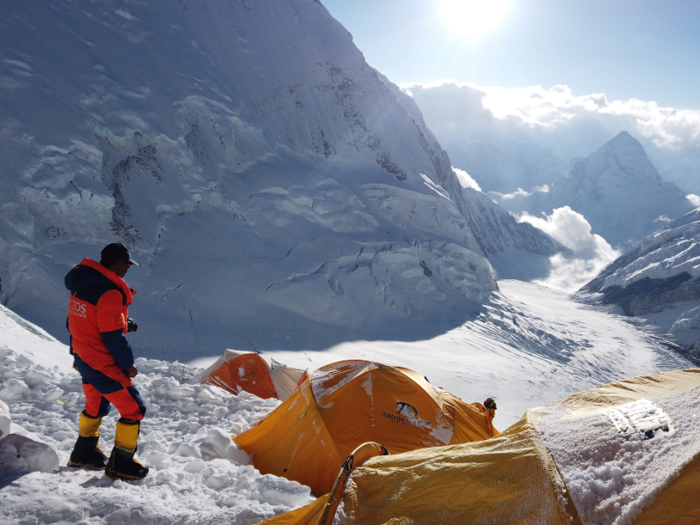
She added: "It's absolutely crucial that you pay attention to what's going on around you and inside your body. You need to pay attention to small signals that your body is giving you."
When Everest warms in April and May, there are often just a few good windows of hiking weather. Everybody wants to summit during those critical days, which can lead to lines at the top.

"There's people everywhere," Peedom said. "You're in this incredibly remote place and yet you're just lining up."
Some expedition companies have blamed these lines for the deaths that occurred last month, since the wait caused people to spend more time in the part of Everest known as the "death zone," which starts 26,000 feet up. But Kami Rita Sherpa said these traffic jams are nothing new.
"It is not this year only," he said. "Every year there's some [days] like that."
Instead, Sherpa said deaths on Everest happen after climbers inadvertently push their bodies past their limits, which makes it hard to climb back down. "When returning, their body is out of energy, and many people die due to this cause," he said.
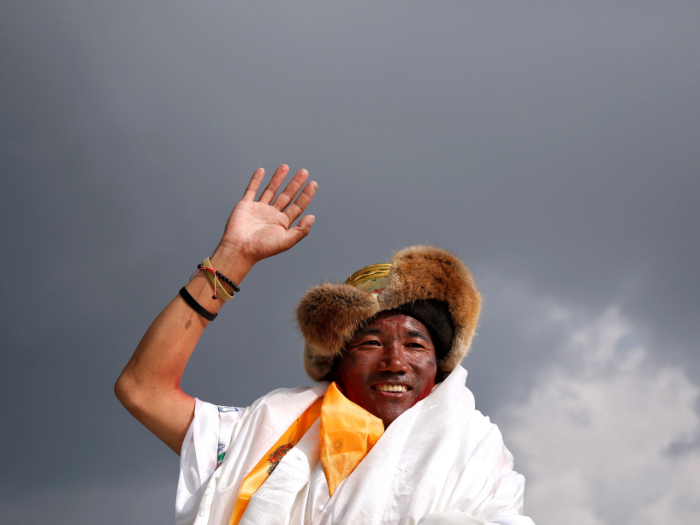
Burke echoed that sentiment.
"At that altitude, it takes everything to put one foot in front of the other," she said. "If you haven't judged how much gas you have left in the tank, then you can't make it down. That's why some climbers sit down and don't get back up."
Lhakpa Sherpa, who has reached the summit more times than any other woman, previously told Business Insider that climbers can suffer from an oxygen-starved delirium in the death zone. "Their life is in our hands and we must protect them from their own insanity," she said.
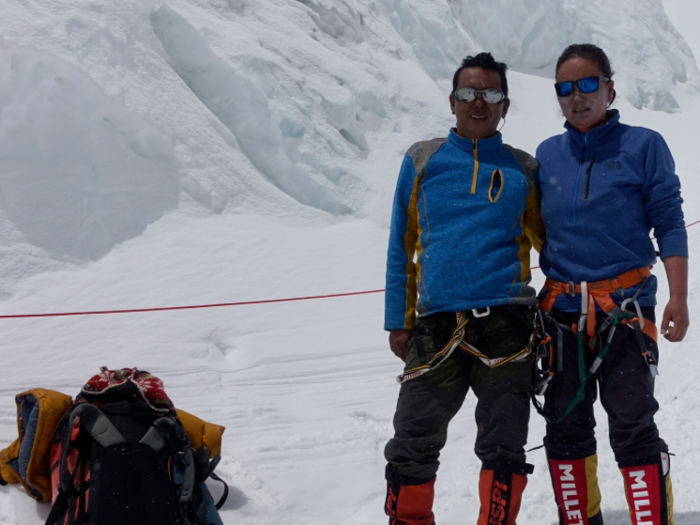
Sherpa has summited Everest nine times. During the rest of the year, she works as a dishwasher at a Whole Foods grocery store in West Hartford, Connecticut.
"Your body is breaking down and essentially dying," Burke said of the death zone. "It becomes a race against the clock."
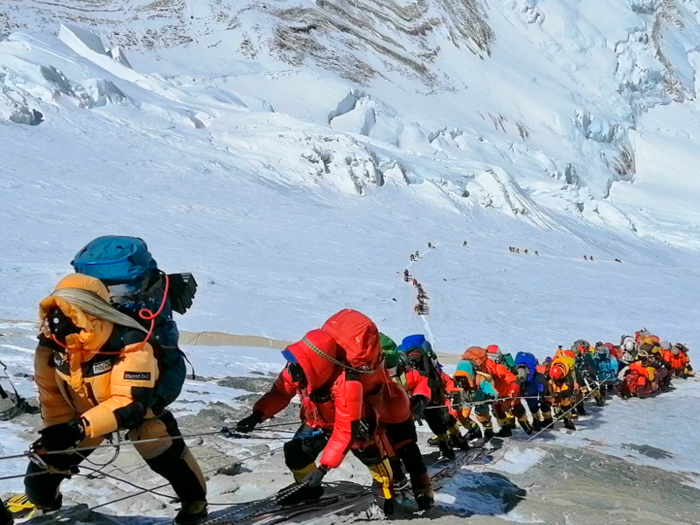
Near the summit, mountaineers' judgment becomes impaired, and some have been known to do strange things like start shedding their clothes or talking to imaginary friends.
Everest climber David Carter told PBS that climbing in the death zone is "a living hell."
"You really don't care if you die or if you just sit down and don't go any further," he added.
The trek from Camp Four to the summit adds 2,500 feet in elevation. It takes about seven hours. Lhakpa Sherpa said this is by far the most difficult day of the journey.
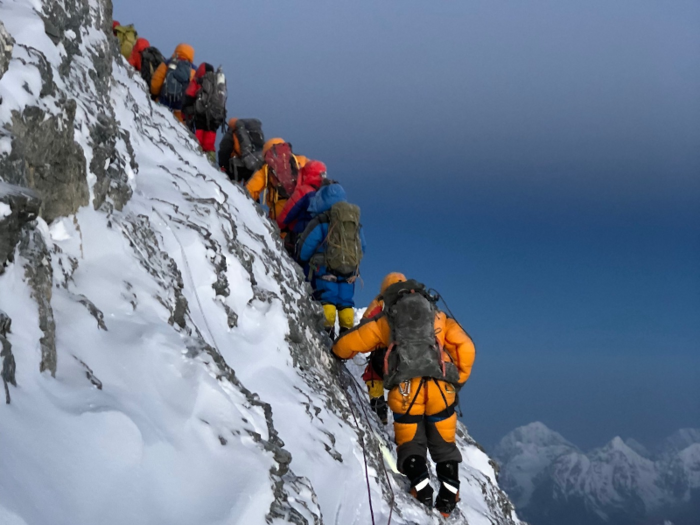
Typically, climbers attempt to make it to the summit and back to Camp Four in a single day, spending as little time as possible in the death zone.
On the way up, climbers pass corpses of fallen hikers. Lhakpa Sherpa said she saw seven bodies last year. One stuck in her mind. "He looked alive, because the wind was blowing his hair," Sherpa said.
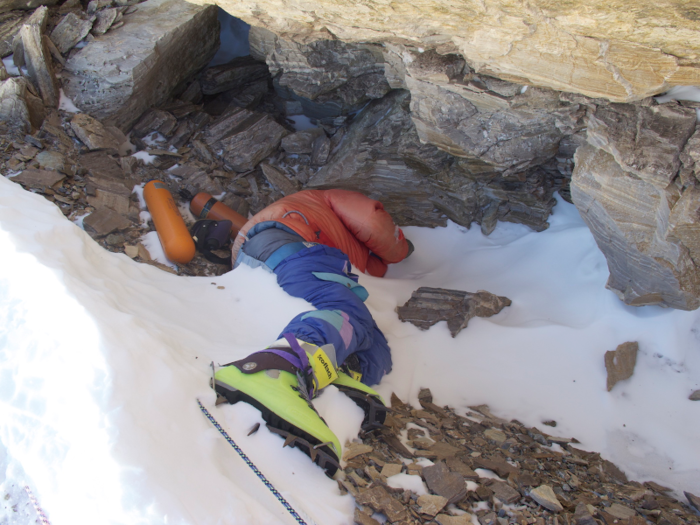
For years, Everest climbers have spoken of a dead man they called "Green Boots" (shown above), who lies in a cave roughly 1,130 feet from the top.
Sherpa said she carries out special summiting rituals. "I talk with the mountain," she said, "very quiet." She also meditates, envisioning the successful climb and telling the mountain not to kill her.
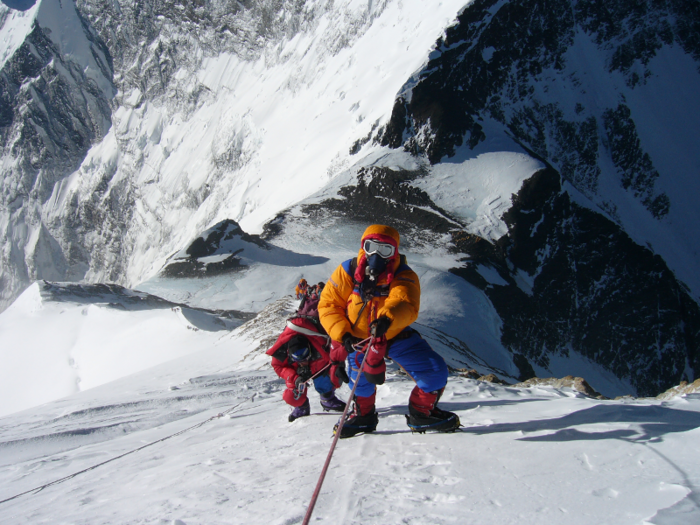
Burke's summit attempt began around 11 p.m., in total darkness.
"You almost felt like you could touch the sky," she said. "It was a cloudless night, the stars were so bright, and all you could hear was breathing sound and see the headlamps of climbers in a line going up the mountain."
Reaching the summit, Lhakpa Sherpa said, is an unparalleled feeling. "I feel like a zombie who has stumbled into heaven. At the summit, I truly feel on top of the world," she said. "A euphoria I cannot find anywhere else."
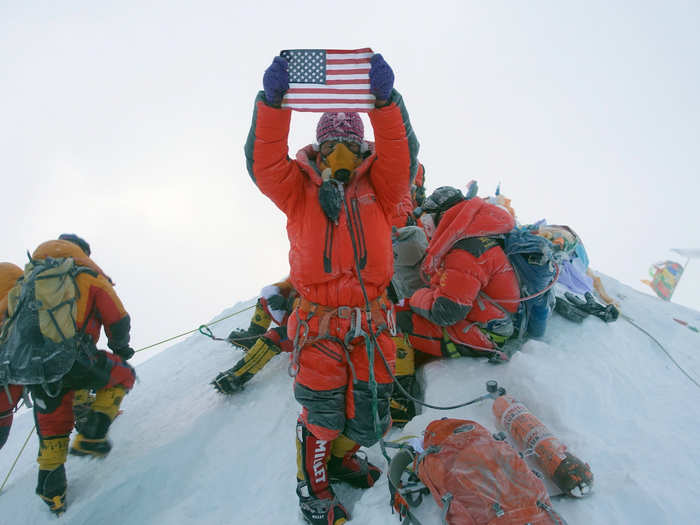
Even though most climbers would like to linger at the top, Sherpa tells her clients to spend only 20 minutes there before heading back down to get out of the death zone.
"The summit is only halfway," Burke said. "Your ultimate goal should be to make it back to camp alive."

Ten of the 11 climbers who perished last month on Everest perished after they summited. Donald Lynn Cash, a 55-year-old from Utah, "collapsed as soon as he reached the summit" and died there, according to The Kathmandu Post.
Crystal said he is glad he attempted to climb Everest, even though he didn't get close to the summit. "It doesn't really matter what your age is, it doesn't matter whether you really reach the goal, its having the goal and working toward the goal that's the important part," he said.
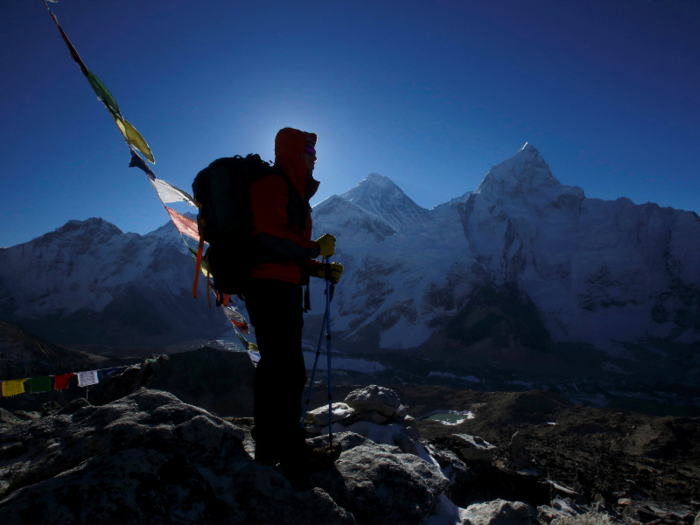
Popular Right Now
Popular Keywords
Advertisement